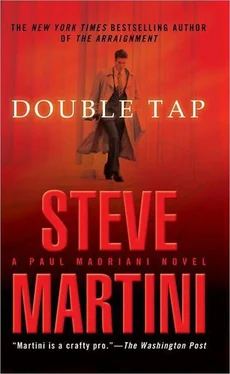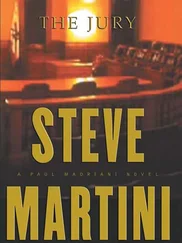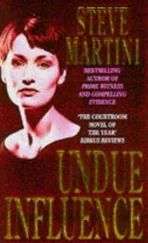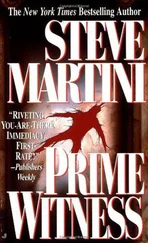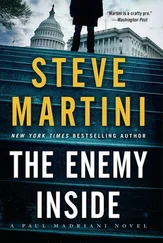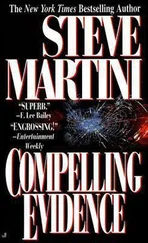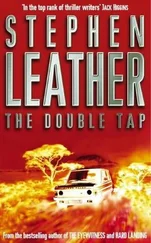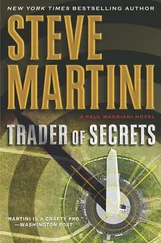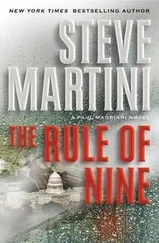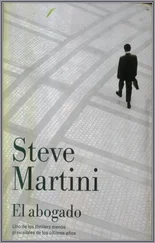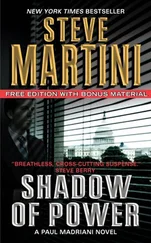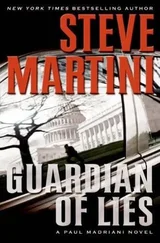Steve Martini - Double Tap
Здесь есть возможность читать онлайн «Steve Martini - Double Tap» весь текст электронной книги совершенно бесплатно (целиком полную версию без сокращений). В некоторых случаях можно слушать аудио, скачать через торрент в формате fb2 и присутствует краткое содержание. Год выпуска: 2014, ISBN: 2014, Издательство: Jove, Жанр: Триллер, на английском языке. Описание произведения, (предисловие) а так же отзывы посетителей доступны на портале библиотеки ЛибКат.
- Название:Double Tap
- Автор:
- Издательство:Jove
- Жанр:
- Год:2014
- ISBN:9781101550229
- Рейтинг книги:4 / 5. Голосов: 1
-
Избранное:Добавить в избранное
- Отзывы:
-
Ваша оценка:
- 80
- 1
- 2
- 3
- 4
- 5
Double Tap: краткое содержание, описание и аннотация
Предлагаем к чтению аннотацию, описание, краткое содержание или предисловие (зависит от того, что написал сам автор книги «Double Tap»). Если вы не нашли необходимую информацию о книге — напишите в комментариях, мы постараемся отыскать её.
Double Tap — читать онлайн бесплатно полную книгу (весь текст) целиком
Ниже представлен текст книги, разбитый по страницам. Система сохранения места последней прочитанной страницы, позволяет с удобством читать онлайн бесплатно книгу «Double Tap», без необходимости каждый раз заново искать на чём Вы остановились. Поставьте закладку, и сможете в любой момент перейти на страницу, на которой закончили чтение.
Интервал:
Закладка:
“In some cases. For example, in basic training that may be required. But they only have to sign for it once, when the weapon is assigned to them, and then again on the required form when it is formally surrendered or returned to government stores, sometimes upon reassignment to a new post, or when the person is discharged from the military.”
“And in this case, is the form on the screen an accurate copy of the original in your folder?”
“It is.”
“And can you identify for us the weapon that this document relates to?”
“It’s the same People’s exhibit six. You can see the serial number as well as the description, make, and model of the firearm on the line just above the signature.”
“And can you make out the signature? Can you tell us whose name that is?”
“The name in the signature block on the form is Emiliano Michael Ruiz.”
“So the form in question”-Templeton points at its DOD number and date up on the screen-“would indicate that the firearm in question, what we have identified as People’s exhibit six, was issued to Emiliano Ruiz on the date set forth, is that correct?”
“Yes.”
Templeton nods. “Can you tell us, are you acquainted with Mr. Ruiz?”
“Not personally, no.”
“Would you know him if you saw him?”
“Yes.”
“And how would you know what he looked like?”
“From military records,” says the witness. “I had occasion to examine his Army records-including photographs, his military ID number-which also contained documents bearing his signature.”
“Is Mr. Ruiz in the courtroom today?”
“Yes, he is.”
“Could you identify him for the jury.”
Before the witness can point, Ruiz stands up at our table. We have been prepared for this and decided that it would be best that Emiliano not be caught sitting or slouching at the table as if skulking from the jury.
“That’s him,” says the witness.
“May the record reflect that the witness has identified the defendant, Emiliano Ruiz,” says Templeton. “Now, let me ask you, does your office or your department have any records evidencing the transfer of this weapon to anyone else?”
“No.”
“Does your office or your department have any records evidencing the surrender or return of this firearm by Mr. Ruiz back to the military or to the Department of Defense upon his discharge from the military three years ago?”
“No, we do not.”
“Was Mr. Ruiz required by law to return this weapon to the military-to turn it in at the time of his discharge?”
“He was.”
“But he failed to do so, is that correct?”
“Apparently,” says the witness.
With each question, the noose tightens.
“So the weapon in question, that handgun”-Templeton points to the evidence table-“People’s exhibit six, is actually property belonging to the United States government, is that right?”
“It is.”
Templeton has the witness testify as to Ruiz’s skill with a handgun: the fact that he was at one time, according to records, on the Army Pistol Team and that his last assignment was as a range instructor at Fort Bragg. He offers no specifics. After some tugging and word twisting, Templeton gets the major to agree that Ruiz could be considered a “world-class” shooter. I object on grounds that the term is vague, and the judge strikes it from the record and instructs the jury to disregard it. As if he can unring the gong.
Templeton then slows the beat a bit. He casts about in the stack of papers on the podium until he finds what he wants.
“Let me ask you, Major, do you also serve as liaison in the Pentagon for small-arms training at certain military bases, including Fort Bragg in North Carolina?”
“I do.”
“In this capacity, are you familiar with small-arms training techniques?”
“I’m not an instructor but I am familiar with techniques and training regimens.”
“Are you familiar with firearms training techniques that are involved in what is called CQBs, otherwise known as close-quarters battles?”
“I am.”
“Can you explain to the jury what is involved in close-quarters-battle training?”
“It depends on the unit involved, but for the most part it focuses on small-group team techniques. The coordination used in a close-quarters assault. It’s designed to teach techniques that might be used for the assault on a building to capture it, or possibly for hostage rescue or to take prisoners. The training would emphasize selective fire so that only intended targets are shot: shooting on the move, engaging multiple targets, how to sweep an area with the muzzle of a firearm to avoid friendly-fire accidents. It would also include procedures and practices for entry so as to provide covering fire for members of the team.”
“Would this involve training with live fire? Weapons that are actually loaded with live ammunition?”
“Oh, yes. Again, depending on the unit, it could be anything from hundreds to thousands of hours. It would involve intensive live-fire training in realistic situations so that the techniques that are imparted become instinctive, instilled,” Ellis says.
“By instinctive you mean second nature?”
“Yes.”
“Do these techniques take a long time to learn?”
“To learn them well, so that they can be performed reliably in actual armed confrontations, yes. In almost any situation it always comes back to training,” says the witness. “Studies show that what you learn at the instinctive level is what you will do when it comes time to perform, especially under stress.”
“Now let me ask you, with reference to that particular firearm”-Templeton motions toward the table where the Mark 23 is laid out-“People’s exhibit six. To your knowledge, was that model of weapon designed for any specific purpose?”
“Yes. It was designed under contract for the military, Special Operations Command, for use principally in specified situations including close-quarters battle.”
Most of this is included with the literature on the handgun from the manufacturer and in online articles, but the fact that Templeton has someone in uniform on the stand reciting it gives it more credence as it is delivered to the jury.
“Is that why the kit included with the gun contains a silencer-the suppressor?”
“Yes.”
“Oh, by the way, while I’m at it, do you know whether the possession of a silencer, a suppressor, by a private citizen, not a member of the active military, is a violation of law?”
“Objection as to relevance, Your Honor. There is no charge as to that issue.”
Templeton tries to slip one in under the belt.
“Sustained. Move on, Mr. Templeton.”
“Just a few more questions, Your Honor.” He regroups. “So the weapon, People’s exhibit six, was specifically designed for applications involved in close-quarters battle?”
“Yes. It could be used in other situations as well.”
Templeton draws the witness back before he can wander too far: “But it was designed with that in mind, is that right?”
“That’s correct. The United States military ceased use of the forty-five automatic as the standard-issue sidearm some years ago. They went to a nine-millimeter pistol manufactured by Beretta at that time.”
“That’s a smaller caliber, is that correct? Smaller than the forty-five?”
“That’s right.”
“So what was the military trying to achieve by returning to the forty-five automatic in the form of that particular handgun? Again, I’m talking about People’s exhibit number six.”
“Lethality,” says the witness.
Templeton turns to look at the jury wide-eyed, as if to say, Where have we heard that term before? Templeton’s physical gestures and timing are worth the price of admission: his diminutive stature seems to magnify their effect.
Читать дальшеИнтервал:
Закладка:
Похожие книги на «Double Tap»
Представляем Вашему вниманию похожие книги на «Double Tap» списком для выбора. Мы отобрали схожую по названию и смыслу литературу в надежде предоставить читателям больше вариантов отыскать новые, интересные, ещё непрочитанные произведения.
Обсуждение, отзывы о книге «Double Tap» и просто собственные мнения читателей. Оставьте ваши комментарии, напишите, что Вы думаете о произведении, его смысле или главных героях. Укажите что конкретно понравилось, а что нет, и почему Вы так считаете.
